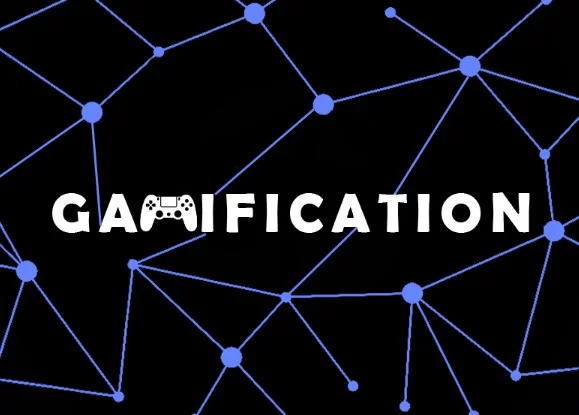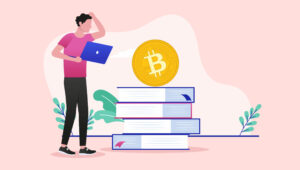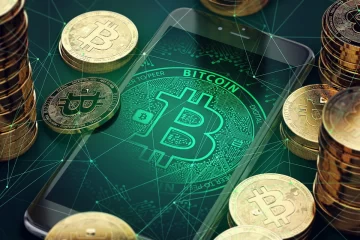
- Gamification applies game-like elements, mechanics, and principles to non-game contexts, such as education, business, marketing, and other areas.
- One of the pioneering examples of gamified crypto learning is the game “CryptoKitties.”
- These games offer a gateway to learning and a means of earning cryptocurrency through enjoyable and interactive experiences.
In recent years, cryptocurrency has taken the financial landscape by storm. As the allure of decentralized finance and blockchain technology continues to captivate the curious minds of newcomers and experienced investors alike, a new trend has emerged in the crypto space: gamification. Combining the excitement of gaming with the educational value of cryptocurrency, these innovative games provide a dynamic and engaging way to learn about the intricate world of blockchain technology, non-fungible tokens (NFTs), and digital assets. Let’s look at the impact of gamification on crypto learning.
Gamification of crypto learning
Gamification applies game-like elements, mechanics, and principles to non-game contexts, such as education, business, marketing, and other areas. The goal of gamification is to engage and motivate individuals using elements commonly found in games, such as challenges, rewards, competition, achievements, and a sense of progression.
At its core, gamification taps into the natural human inclination to enjoy and participate in games. Organizations and educators aim to enhance user participation, boost motivation, and encourage desired behaviors’ by incorporating game elements into various activities. This concept has gained significant traction recently due to its potential to create more immersive and engaging experiences in multiple fields.
Critical elements of gamification
Points and rewards
Participants earn points or rewards for completing tasks or achieving specific goals. These rewards range from virtual badges or trophies to real-world incentives like discounts or prizes.
Challenges and goals
Setting clear objectives and challenges provides participants with a sense of purpose and direction. These challenges can be progressively more difficult, encouraging participants to improve continuously.
Progression and levels
Participants often progress through different levels as they accomplish tasks or meet goals. Advancing to higher levels signifies growth and accomplishment.
Competition
Adding a competitive element can spur engagement as individuals strive to outperform others. Leaderboards and rankings can create a sense of rivalry and motivation to excel.
Achievements and badges
Earning achievements and badges signify accomplishments and recognise participants’ efforts, further motivating them to continue participating.
Feedback
Timely and constructive feedback informs participants about their progress and performance, allowing them to adjust their approach and improve.
Storytelling
Incorporating storytelling elements can create an immersive experience, making the activity more relatable and engaging.
Exploring the intersection of gaming and crypto
One of the pioneering examples of gamified crypto learning is the game “CryptoKitties.” Furthermore, developed by Dapper Labs, CryptoKitties allows players to collect, breed, and trade digital cats. Moreover, each feline is represented by a unique NFT, essentially a digital collectible that cannot be replicated. Additionally, this game serves as an entertaining pastime and an intuitive introduction to blockchain technology and the concept of NFTs. By participating in the game, players gain firsthand experience handling digital assets on the blockchain, thus demystifying the often complex world of cryptocurrencies.
Building on the success of CryptoKitties, “Axie Infinity” takes the concept of NFT gaming to a new level. Pokémon inspired them. This game centres around players collecting, training, and battling creatures known as Axies. These creatures are also NFTs; players can earn real cryptocurrency by winning battles or breeding Axies. This innovative approach bridges the gap between entertainment and education, allowing players to explore the practical aspects of managing NFTs and generating income within a virtual ecosystem.
The power of virtual worlds and play-to-earn
“The Sandbox” introduces players to virtual ownership and monetization. Moreover, in this game, participants can utilize cryptocurrency to purchase virtual land, create games, and sell their creations to other players. Furthermore, this concept empowers players to become creators and entrepreneurs within a virtual world, thereby gaining insight into the potential applications of blockchain beyond finance. Additionally, by offering a platform for creativity and innovation, “The Sandbox” provides a practical avenue for players to understand the broader implications of blockchain technology.
“Splinterlands” and “Gods Unchained” further emphasize the gamification of cryptocurrency by offering collectible card games with NFTs. Players engage in battles in these games using digital cards representing various fantasy creatures. Moreover, the outcome of these battles not only influences in-game rewards but can also translate into actual cryptocurrency earnings. As a result, this approach encourages strategic thinking, decision-making, and an understanding of the value of digital assets within a competitive environment.
Expanding horizons: A world of gamified crypto learning
Beyond the games above, a plethora of other titles contribute to the gamified crypto learning landscape:
Aavegotchi
This collectible game features ghost-like creatures backed by the AAVE cryptocurrency, showcasing the link between digital assets and in-game characters.
Alien Worlds
A play-to-earn game where players mine the Trilium cryptocurrency within a virtual universe, promoting the concept of real-world value tied to digital activities.
CryptoPop
A puzzle game revolving around NFTs representing cryptocurrency tokens, promoting familiarity with various permits and their distinct features.
Upland
An immersive virtual world where players trade virtual properties, encouraging the understanding of property ownership and trading within a digital context.
Mobox
A play-to-earn game with a collection and battle focus, highlighting the potential for earning cryptocurrency through engaging gameplay.
The road ahead: merging education and entertainment
As cryptocurrency evolves, so does the potential for gamified learning experiences. The fusion of entertainment and education provides a unique platform for individuals to explore complex concepts in an approachable and engaging manner. The wide array of games available, from virtual property trading to card battles, demonstrates the versatility of gamification in conveying the principles of blockchain technology, NFTs, and the broader crypto landscape.
These games offer a gateway to learning and a means of earning cryptocurrency through enjoyable and interactive experiences. By immersing players in a dynamic environment where real value is tied to in-game activities, gamified crypto learning can educate and inspire a new generation of crypto enthusiasts.
The gamification of crypto learning represents a significant step forward in making the complexities of blockchain technology and digital assets accessible to a broader audience. With games like CryptoKitties, Axie Infinity, and other innovative titles, individuals can engage with cryptocurrency concepts entertainingly and educationally. As crypto expands, we can anticipate more creative and immersive experiences that further bridge the gap between education and entertainment. So, whether you’re battling creatures, trading virtual properties, or solving puzzles, a gamified crypto learning experience is waiting for you to explore.
- SEO Powered Content & PR Distribution. Get Amplified Today.
- PlatoData.Network Vertical Generative Ai. Empower Yourself. Access Here.
- PlatoAiStream. Web3 Intelligence. Knowledge Amplified. Access Here.
- PlatoESG. Automotive / EVs, Carbon, CleanTech, Energy, Environment, Solar, Waste Management. Access Here.
- PlatoHealth. Biotech and Clinical Trials Intelligence. Access Here.
- ChartPrime. Elevate your Trading Game with ChartPrime. Access Here.
- BlockOffsets. Modernizing Environmental Offset Ownership. Access Here.
- Source: https://web3africa.news/2023/09/03/news/the-gamification-of-crypto-learning/
- :has
- :is
- :not
- :where
- a
- aave
- About
- above
- accessible
- accomplish
- accomplishments
- achievements
- achieving
- activities
- activity
- actual
- Additionally
- advancing
- ahead
- aim
- alike
- Allowing
- allows
- allure
- also
- an
- and
- anticipate
- applications
- approach
- ARE
- areas
- around
- Array
- AS
- aspects
- Assets
- At
- audience
- available
- Avenue
- Axie
- Axie Infinity
- backed
- badges
- Battle
- battles
- battling
- BE
- become
- between
- Beyond
- blockchain
- blockchain technology
- boost
- BREED
- BRIDGE
- bridges
- broader
- business
- but
- by
- CAN
- cannot
- captivate
- card
- card games
- Cards
- Cats
- centres
- challenges
- characters
- clear
- collect
- Collectible
- Collecting
- collection
- combining
- commonly
- competition
- competitive
- completing
- complex
- complexities
- concept
- concepts
- constructive
- context
- contexts
- continue
- continues
- continuously
- contribute
- Core
- create
- creations
- Creative
- creativity
- creators
- crypto
- crypto enthusiasts
- crypto landscape
- crypto space
- cryptocurrencies
- cryptocurrency
- Cryptokitties
- curious
- dapper
- Dapper Labs
- decentralized
- Decentralized Finance
- Decision Making
- demonstrates
- desired
- developed
- different
- difficult
- digital
- Digital Assets
- Digital Collectible
- direction
- discounts
- distinct
- does
- due
- dynamic
- each
- earn
- Earning
- Earnings
- ecosystem
- educate
- Education
- educational
- educators
- efforts
- element
- elements
- emerged
- emphasize
- empowers
- encourage
- encourages
- encouraging
- engage
- engagement
- engaging
- enhance
- enjoy
- enjoyable
- entertaining
- Entertainment
- enthusiasts
- entrepreneurs
- Environment
- essentially
- evolves
- examples
- Excel
- Excitement
- expands
- experience
- experienced
- Experiences
- explore
- Familiarity
- FANTASY
- Features
- feedback
- Fields
- finance
- financial
- Focus
- For
- Forward
- found
- from
- further
- Furthermore
- fusion
- Gain
- gained
- gaining
- game
- gameplay
- Games
- gamification
- gaming
- gap
- gateway
- generating
- generation
- goal
- Goals
- Growth
- Handling
- higher
- highlighting
- Horizons
- HTTPS
- human
- immersive
- Impact
- implications
- improve
- in
- in-game
- Incentives
- Income
- incorporating
- individuals
- Infinity
- informs
- Innovation
- innovative
- insight
- inspire
- inspired
- interactive
- intersection
- into
- Introduces
- Introduction
- intuitive
- Investors
- ITS
- known
- Labs
- Land
- landscape
- LEARN
- learning
- Level
- levels
- like
- LINK
- Look
- Making
- managing
- manner
- Marketing
- means
- mechanics
- Meet
- merging
- minds
- monetization
- more
- Moreover
- Motivation
- multiple
- Natural
- New
- Newcomers
- NFT
- NFT Gaming
- NFTs
- objectives
- of
- offer
- offering
- often
- on
- only
- or
- organizations
- Other
- Others
- Outcome
- Outperform
- ownership
- participants
- participate
- participating
- participation
- performance
- Pioneering
- platform
- plato
- Plato Data Intelligence
- PlatoData
- play to earn
- players
- plethora
- points
- Pokémon
- potential
- power
- Practical
- principles
- prizes
- Progress
- progression
- progressively
- promoting
- properties
- property
- provide
- provides
- purchase
- purpose
- puzzle
- Puzzles
- range
- real
- real value
- real world
- recent
- recently
- recognise
- replicated
- represented
- representing
- represents
- result
- Rewards
- rivalry
- road
- sell
- sense
- serves
- showcasing
- significant
- signifies
- signify
- So
- Solving
- Space
- specific
- Step
- Storm
- storytelling
- Strategic
- strive
- success
- such
- taken
- takes
- Taps
- tasks
- Technology
- that
- The
- their
- Them
- thereby
- These
- they
- Thinking
- this
- Through
- Thus
- Tied
- titles
- to
- Tokens
- traction
- trade
- Trading
- Training
- translate
- Trend
- understand
- understanding
- unique
- Universe
- User
- using
- utilize
- value
- various
- versatility
- Virtual
- virtual land
- Virtual Property
- virtual world
- virtual worlds
- Waiting
- Way..
- we
- webp
- whether
- wide
- winning
- with
- within
- world
- world’s
- years
- You
- zephyrnet













